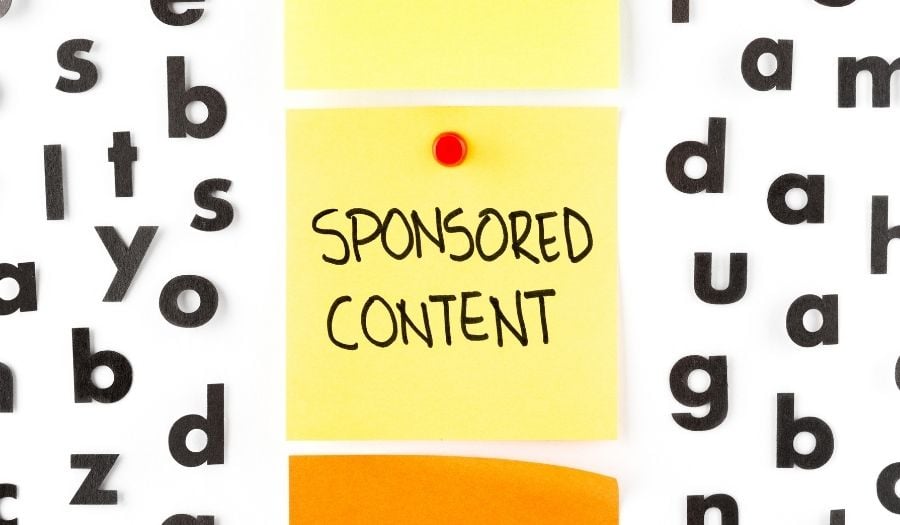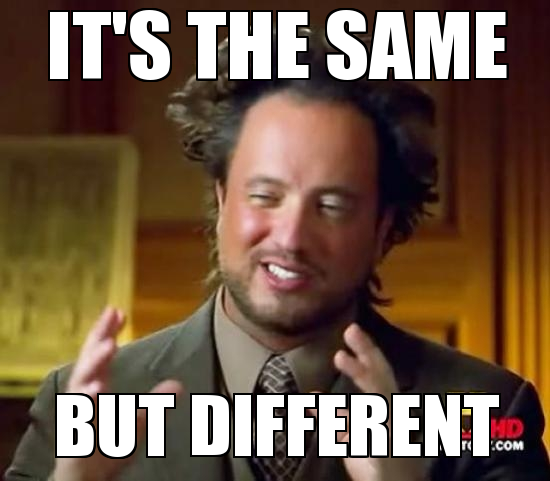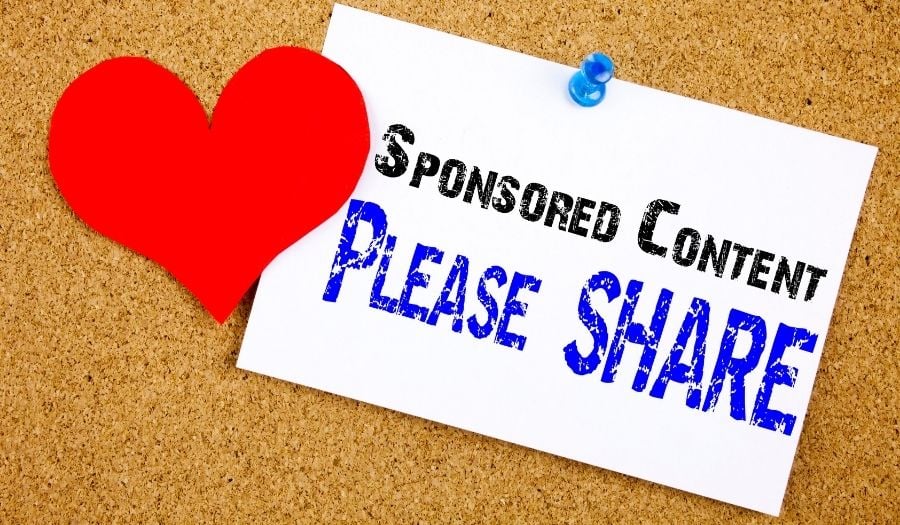In the past decade, native advertising and sponsored content have seen a surge in popularity. The two ad models are very similar: in both cases, a brand pays to produce an article that includes its products or services. But native ads and sponsored content have some key differences that advertisers should know about before making a purchase.

Why Are Native Ads And Sponsored Content Important To Marketers?
We all know that native advertising and sponsored content are both forms of paid media. Native ads work by placing a business' ad within the user's natural reading experience. Sponsored content, on the other hand, is an advertisement that has been created specifically for a site or platform.
As a marketer, learning more about these two popular advertising techniques will help you be more in control of your marketing campaigns.
What Is Native Advertising?
Native advertising is a way to market your business through other websites or platforms that match the content, format, style, or function of the platform on which it appears. For example, a native ad might take the form of recommended content to read. You would have most likely seen native ads on websites that you have visited without being aware of it.
Native ads are usually presented in "You Might Also Like" or "More Like This" lists within articles or posts that you've encountered. It seeks to emulate the look and feel of the content around it rather than disrupting or cluttering the page. This makes native advertising an effective way to reach people because it doesn't disrupt their experience, and it's relevant to what they're looking for.
In native advertising, marketers can promote posts on social media and distribute them through native networks, blogs, and publishers - usually reaching millions of users daily.
What is Sponsored Content?
Sponsored content is a form of marketing that seeks to get the attention of consumers by advertising directly on another website, social media platform, or blog. Sponsored posts are usually sponsored by brands and may take the form of an article, video, picture gallery, or any other type of post on behalf of the brand.
You would have definitely encountered sponsored content at least once in your life – especially if you use any one of the top three social media platforms. For instance, if you watch vlogs of celebrities on YouTube, you would have noticed that they would sometimes mention a brand name or a product that is a "sponsor" for their video.
Another example would be BuzzFeed articles that go something like "The Best Products On Amazon" or "Gifts To Give Your Significant Other This Christmas." The content created by BuzzFeed for these articles is the "Sponsored Content," in that they are paid by the brands/businesses that they have included and promoted within their articles.
Are Native Ads And Sponsored Content The Same?
From what you know so far, based on the above, native ads and sponsored content are not the same. Native ads work similarly with sponsored content in the way that they advertise for brands and/or businesses. They are both found within different types of media, including mobile apps and social feeds.

That being said, however similar they may be, they still function differently from each other.
Let's explore their similarities and differences to help you make an informed decision about which one is best for your business goals.
Similarities
- In native ads or sponsored content, the advertiser will pay a fee to get their ad displayed
- They can generate traffic from potential customers on any type of website or social media platform
- Both are typically less expensive than traditional advertising methods for companies
- Both ad types can reach millions of users at once, on any platform
- Both native ads and sponsored content rely heavily on digital tools
Differences
- Native ads are considered to be a more authentic version of an ad because they blend seamlessly with the content around them, while sponsored content is more direct and obvious advertisements. In fact, content creators/publishers on platforms such as Facebook, Instagram, and YouTube need to specifically indicate that their content is sponsored.
- Native ads are automatically generated by a native ad platform and displayed by publishers, while sponsored content integrates your business/brand into the content itself.
- Sponsored content tend to be a bit more expensive because the publishers will also have to create their own content (and include yours in it)
When Should You Use Which Type Of Ad?
Native advertising and sponsored content are two different types of advertisements on social media sites. Native ads are created by the company that is trying to advertise their product, while sponsored content is any type of media that is created by the publisher, brand ambassador, or social media influencer.
Of course, there are pros and cons for both types of advertisement, but here's a quick guide to help you in deciding which one to use for your next campaign.
Use Native Ads If:
- You want a more discreet way to advertise
Because native ads blend in with organic content, they're less likely to be perceived by customers as marketing content.
- You want to reach more customers with a relatively lower budget.
Generally speaking, native ads tend to be cheaper than sponsored content because you are providing the content yourself, and the publisher doesn't have to modify its own content to accommodate your advertising needs.
- You want to make sure that you reach the right target audience.
If you use native ads, chances are that the publisher will already have customers who are interested in businesses similar to yours.

Use Sponsored Content If:
- You want to associate your brand with a specific publisher/brand ambassador
For a business to be in sponsored content, you will have to find a publisher or brand ambassador that has the right target audience for your business. For example, you can get your content published by a YouTube creator, and the content creator will then promote your business for you.
- You have a budget that could cover the publisher's fees.
If you can afford it, you can opt for sponsored content as you will get exclusive access to publishers. In most cases, you can actually dictate whether or not the publisher you are sponsoring will only promote your brand. If you don't want the publisher to promote other businesses similar to yours, you can opt for sponsored content – but it will typically cost you more.
- You want to leave the content creation to your publisher or a third-party creator.
While native ads can be automatically generated for your publisher (usually through native ad platforms like Taboola), sponsored content is made by the publisher itself. You might not have control over what the publisher will create, but you can be assured that your business, service, or product will be highlighted by the publisher.
If you want more control over the content of the sponsored post, then you can outsource it to someone else then submit the work (whether written, video, infographic, or more) to the publishing website — if the website allows this.
Final Thoughts on Native Advertising vs Sponsored Content
When you are trying to decide between native ads and sponsored content, it is important to consider the goals of your advertising campaign. Native ads tend to be cheaper than sponsored content because they require less work on behalf of the publisher (you provide the media), but if you want your brand associated with a specific publisher or influencer, then being in a sponsored post might help that happen.
If cost isn't an issue for you, then opting for sponsorship may give you more control over how exactly your business will be represented by whoever publishes it. However, if discretion is key when choosing which type of ad would work best for your company's next marketing strategy -native advertisements have been shown to blend into organic social media posts better without drawing too much attention- then native ads could be the way to go.
If you choose sponsored content, remember that it can work well for established brands and companies with large budgets. For new businesses and startups with little capital, a more straightforward (but less high-paying) alternative would be to use native advertisements as they often require less money and effort on your part.
Native ads and sponsored content are both ways to promote your business, but they do it in different ways. Sponsored content is more like a press release if it is in written form, while native ads integrate with the site's design and layout, so they look just like any other article.
Which will work best for your company? It's up to you! What to use depends on your company's marketing goals, resources, and budget. You can try both of these options and then decide which one works better based on how well it converts visitors into customers.
Want to learn more about converting visitors to customers? Find out how we can help you do that through Brax by booking a demo today!

